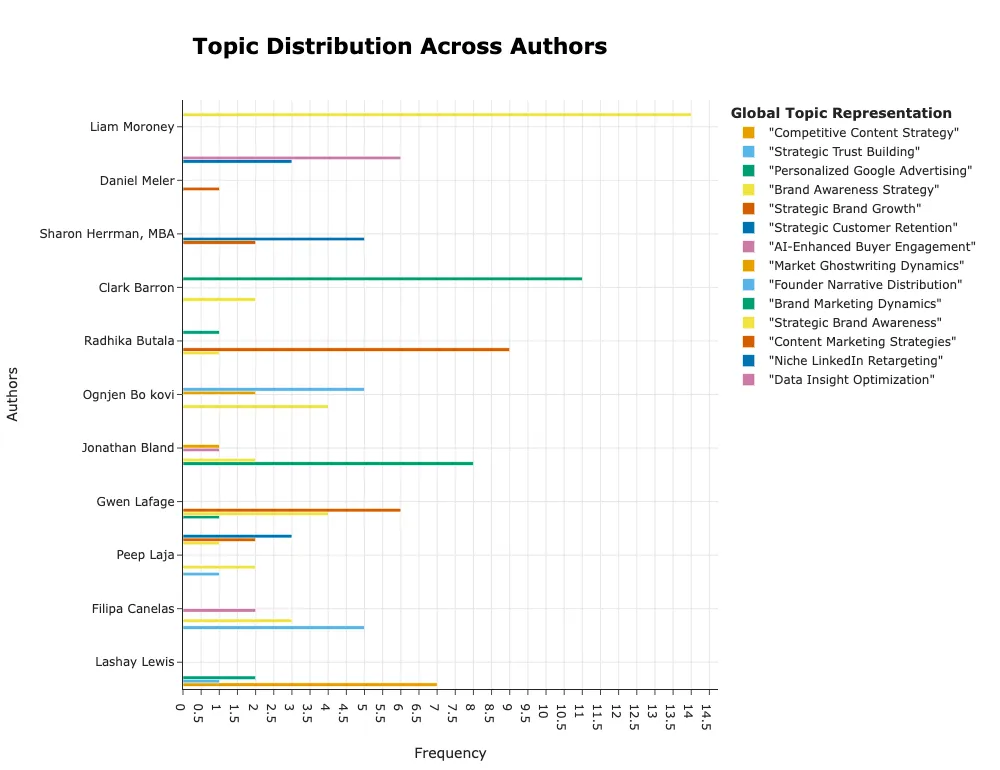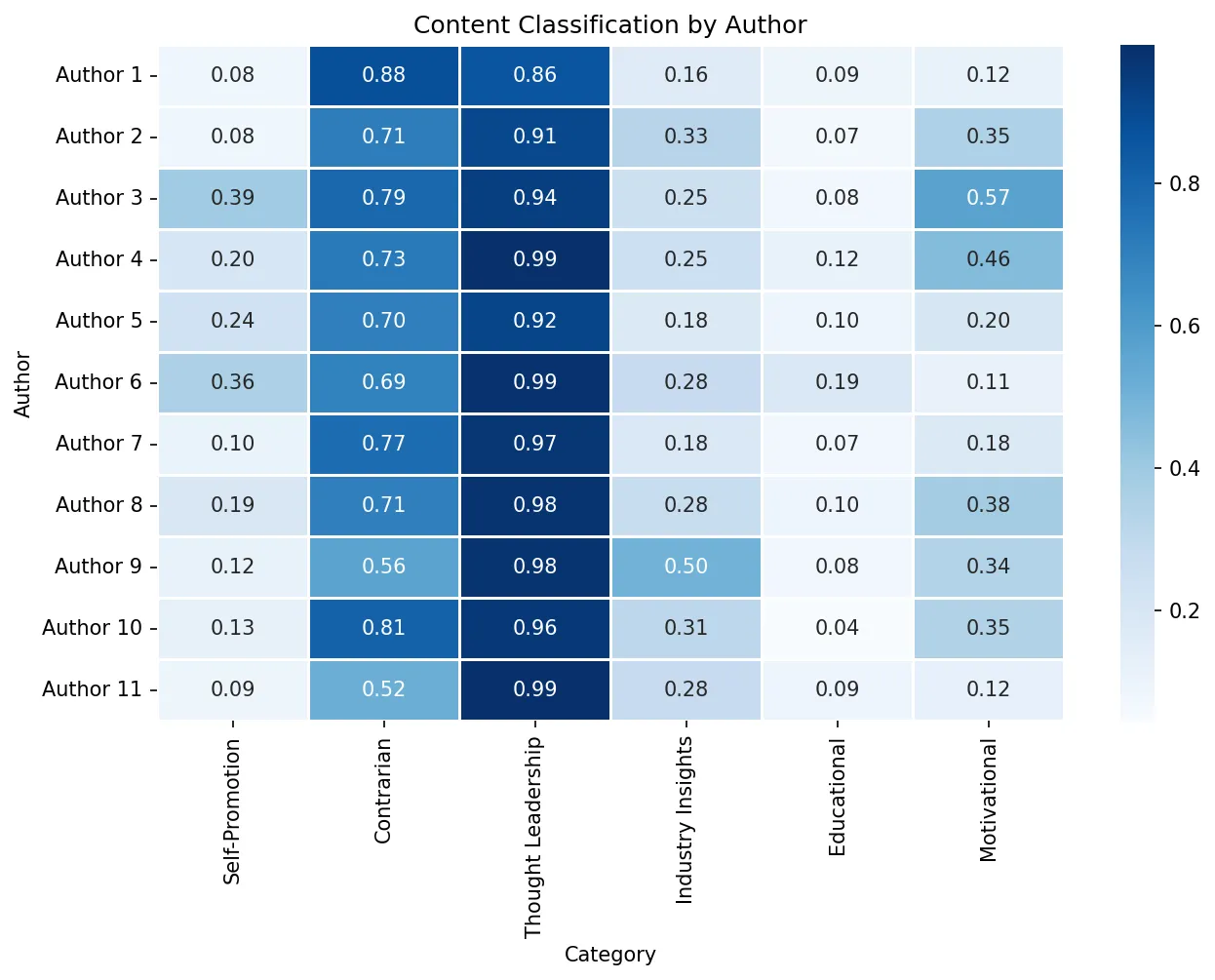Analyzing LinkedIn Posts with Python & NLP
AI Content Disclaimer: The first draft of this case study was created using my pair-coding agent’s review of my codebase + existing blog post (pure human content). Further context was added with a prompt (human) that detailed expecations, content hierarchy, and preferred markdown structure. Final draft is mostly human.
Overview
When I first thought of this project it was mostly to test my information retrieval, natural language processing and machine learning skill sets to deconstruct marketing discourse on LinkedIn. The professional networking site’s algorithm had been aggressively serving up content focused on bashing B2B marketing practices that avoided brand marketing in favor of performance marketing. My confirmation bias lapped it up.
As a staunch advocate for media and data literacy I’m quite aware:
Popular/Viral Content ≠ Truth
By integrating topic modeling, keyword extraction, and zero-shot classification, the project explores how different forms of content—such as contrarian takes, storytelling, and strategic insights—contribute to perceived thought leadership. The results offer insight into the evolving nature of brand communication, digital identity construction, and community signaling in professional networks.
This research sits at the intersection of computational linguistics, communication theory, and digital sociology, contributing to the understanding of how brands and individuals co-construct meaning and authority in digital spaces.
Research Questions
Or what was I hoping to learn?
- What thematic and rhetorical structures characterize high-performing brand content authored by marketing leaders?
- Can unsupervised and zero-shot NLP methods reliably detect intent categories in short-form marketing discourse?
- How do individuals differ in their use of dominant narrative types (e.g., aspirational vs. contrarian)?
- What can topic and intent trends across authors reveal about brand identity formation in online professional networks?

Methodology Overview
| Step | Technique | Tools / Libraries |
|---|---|---|
| 1. Corpus Construction | Manual curation of LinkedIn posts from 11 authors | Python, Playwright, pandas |
| 2. Preprocessing | Cleaning, lemmatization, tokenization | spaCy,re |
| 3. Topic Modeling | Unsupervised theme discovery | BERTopic, UMAP, HDBSCAN |
| 4. Keyword Extraction | Key phrases for summarizing post-level content | KeyBERT, KeyLLM, transformers |
| 5. Intent Classification | Multi-label zero-shot classification of content frames | Hugging Face, facebook/bart-large-mnli |
| 6. Visualization & Insights | Interactive charts and cluster diagrams | matplotlib, Plotly, seaborn |

Interdisciplinary Frameworks:
Information Science: Examines how information is structured, communicated, and consumed in a networked setting.
Communication Theory: Incorporates framing, narrative construction, and audience signaling.
Sociolinguistics: Explores how language constructs authority and professional identity.
Digital Ethnography: Observes branded persona development through shared content.
Contributions:
- Demonstrates how lightweight NLP pipelines can decode strategic communication behaviors at scale.
- Highlights the gap between brand intent and actual content framing.
- Introduces a novel application of zero-shot classification for high-level discourse framing in brand narratives.
- Offers a foundation for future work in automated content diagnostics, brand auditing, or authorial voice modeling.